WASTEWATER TREATMENT
Types of wastewater treatment
OVERVIEW
Table of Contents
What are collective and non-collective types of wastewater treatment ?
Wastewater treatment refers to removing pollutants and contaminants from wastewater before discharge into the environment. Wastewater treatment has two main approaches: collective and non-collective.
Collective wastewater treatment systems collect wastewater from multiple sources, such as households, businesses, and industries, and treat it in a centralized facility. These systems are used in urban and suburban areas with high population densities, and wastewater is generated in large quantities. Public or private entities can own collective wastewater treatment systems and may use different treatment methods, such as biological, physical, and chemical treatments.
Non-collective wastewater treatment systems treat wastewater at or near the generation source. These systems are typically used in rural or remote areas where it is not feasible to connect to a centralized wastewater treatment plant. Non-collective systems include septic tanks, wastewater treatment systems, and constructed wetlands.
A wastewater treatment assessment is typically conducted via a site assessment to determine which sanitation system is appropriate for your needs. Several factors must be considered when making this decision, including the size of your property, the amount of wastewater produced, and the soil type.
How to choose the most suitable wastewater system ?
A wastewater treatment assessment determines which type of sewage treatment plant suits your needs. Various factors need to be considered when making this decision, including your property’s size (PE equivalent), how much wastewater you produce, and the type of soil you have.
The amount of wastewater produced by households varies every day.
Untreated water can be harmful and polluting if released back into the environment, not to mention the costs and penalties associated should this happen. Water must first be treated through a specific network to prevent this.
Wastewater falls into two main categories:
- Greywater – Water that comes from sinks, washing machines, baths, and many other kitchen appliances apart from toilets
- Blackwater – Water from toilets
This sanitation diagnosis aims to prevent waste from going straight into nature. For this purpose, a site assessment will examine the drainage system in the house, whether it is a renovation or a new build, and determine whether it conforms with local law.
What is PE in wastewater terms ?
In wastewater terms, PE refers to “Population Equivalent”, is a measure of organic load. This formula estimates the size of a wastewater treatment plant required to treat the waste generated by a given population. PE assumes that an average person produces a certain amount of organic matter daily (measured by Biological Oxygen Demand, or BOD) and uses this amount to estimate the total organic load in wastewater. One person living in a home or transient population (such as hotels and airports) produces 200 litres of sewage containing 60 grams of BOD daily. So, one person in a typical house would produce 200 litres of sewage per day, including 60 grams of BOD, equal to one Population Equivalent. Therefore, a house with four people would have a PE of 4.
The PE concept is helpful in wastewater treatment plant design, as it provides a standardized measure of the organic load to be treated. It also helps in comparing the effectiveness of different wastewater treatment plants, regardless of the size of the population they serve.
How does individual wastewater treatment differ from mains drainage?
Collective wastewater treatment involves collecting and treating water at a central location before releasing it back into the environment. Compared to collective wastewater treatment, non-collective wastewater treatment consists of each property having its treatment system.
Individual sanitation is required unless there is a collective network in the area. A homeowner must connect their property to a collective system if available in their area.
Individual onsite systems
The owner of a building or house in an area without a communal sewage system is responsible for installing their sewage system. Several options are available, such as a septic tank/primary tank or a Microstation, a wastewater treatment system, which is more environmentally friendly.
You are only required to have a sanitation diagnosis when selling a building or house that does not have a collective sanitation system. Any detected non-conformities that could create a health hazard or environmental risk must be fixed within three years. Property owners have one year to bring their property into compliance if they intend to sell it.
Collective
It is mandatory for a house or building adjacent to a main sewerage system to connect to this system. A professional must be hired to complete this connection if the owner needs to do it themselves. Even if a building is connected to a collective sewerage system, it must have its own sanitation system. Under public roads and private properties, there must be connections to the collective sewerage system and the autonomous one. Non-collective networks are only necessary when connecting properties is difficult or impossible. If this is the case, installing a non-collective network is required.
Our Solutions
TRICEL NOVO, SETA & MAXUS, NON-COLLECTIVE TREATMENT PLANTS:
Tricel has developed a range of wastewater treatment plants suitable for all non-collective requirements.
Our sewage treatment systems offer a simple yet effective process that requires minimal annual maintenance. Tricel’s wastewater treatment plants use aerobic treatment, which involves oxygen to break down organic matter in the wastewater. The process occurs in primary, secondary, and tertiary treatment.
During primary treatment, the wastewater is screened to remove large solids and then passed into the primary tank, where the solids settle at the bottom, and the lightweight materials rise to the top. The settled solids are removed and sent for further treatment, while the lighter materials are passed on to the secondary treatment stage.
In the secondary treatment stage, the wastewater is aerated, encouraging the growth of bacteria that break down organic matter in the wastewater. This is where most of the treatment takes place.
The treated water then passes on to the tertiary treatment stage. Any remaining solids and pollutants are removed from the water during tertiary treatment using filtration. As a result, the water can be discharged into the environment safely.
EUROPEAN CERTIFICATION REQUIREMENTS
Tricel wastewater treatment plants have been certified to European Standard EN 12566-3 and comply with S.R. 66:2015. All plants are tested for strength, water tightness, durability, and treatment efficiency during this certification process. CE-certified wastewater treatment plants will provide customers with high efficiency and security as they have passed the necessary tests and inspections.
DOMESTIC WASTEWATER TREATMENT PLANTS : Tricel NOVO UP TO 50 PE
The Tricel Novo wastewater treatment plants are reliable, easy to install, and simple to maintain.
The applications for these highly functional plants range from 1 to 50 PE (population equivalents). Using proven fixed bed technology, the Tricel Novo submerged aeration pump suits household and light commercial applications. The system consists of three independent treatment zones, each performing a different stage of the purification process.
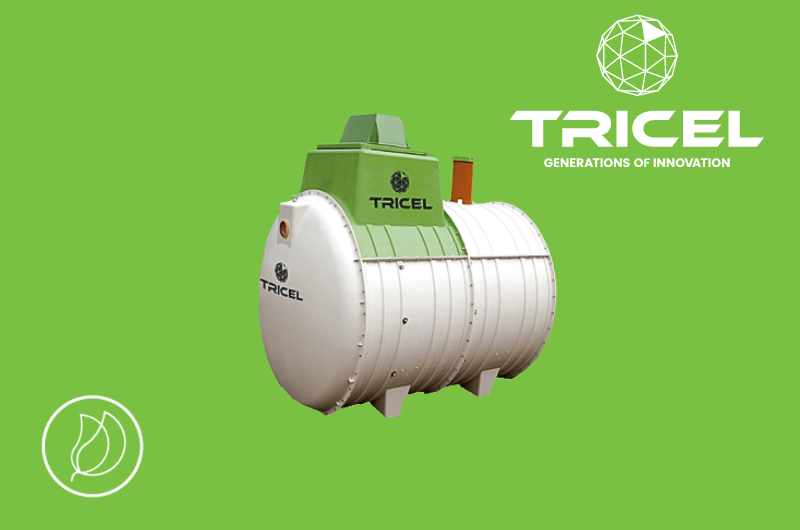
PACKAGED FILTER SYSTEMS: Tricel PURAFLO
The Tricel Puraflo treatment modules are polishing filters for secondary and tertiary wastewater treatment. Sites with high environmental sensitivity, such as those in water table protection zones, require a higher level of treatment. Puraflo modules are combined with a secondary treatment tank, typically an aerobic unit, to achieve the necessary level of treatment.
In the third stage of treatment (tertiary treatment), the secondary treated effluent is further treated. A combined Puraflo polishing filter module and combination system will significantly reduce pathogens and nutrients.
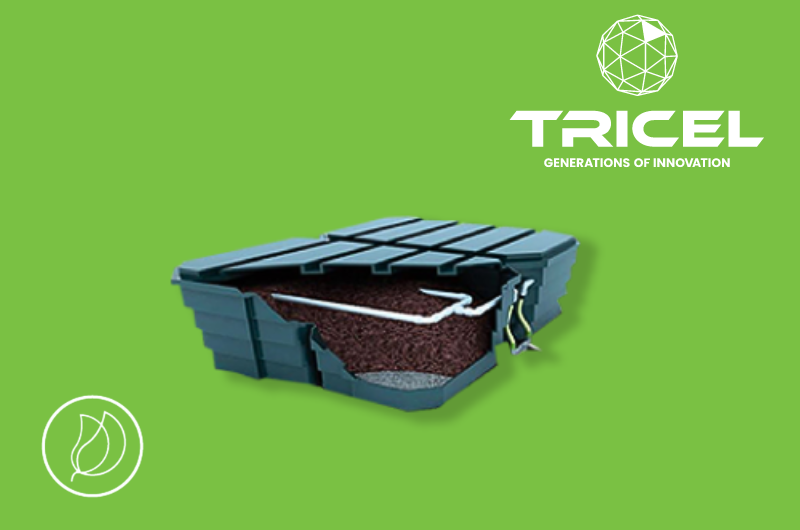
SAND POLISHING FILTER: SANDCEL
As a sand polishing filter, Tricel Sandcel treats wastewater effluent and disposes of the treated liquid into groundwater. These filters allow effluent from secondary treatment units to be treated and disposed of effectively. As stipulated in the EPA Code of Practice, stratified layers of certified sands are used in the filters. This filter is enclosed in impermeable GRP panels and will not rot or decay, ensuring long-term durability. All pipework can be accessed from a service pod, whether the filters are installed above ground or below ground. Under or overground, you can install this sand filter at varying heights depending on the site conditions. Additionally, Sandcel’s in-house team can design filters for larger applications.
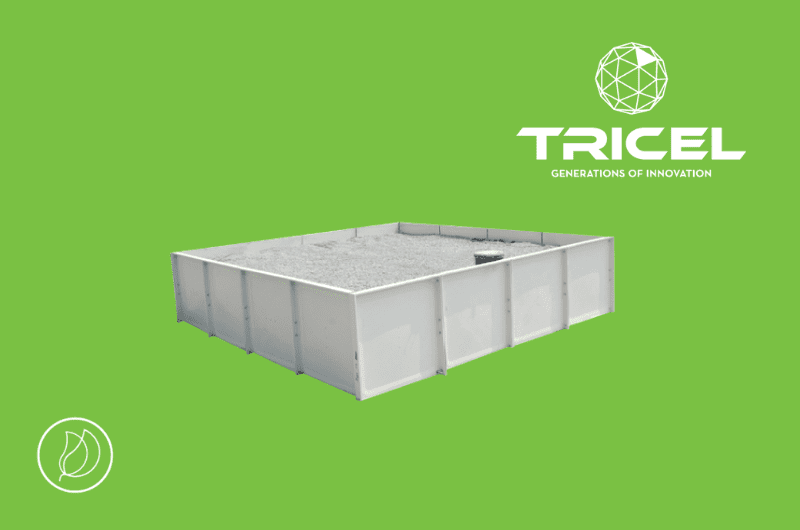
COMMERCIAL WASTEWATER TREATMENT PLANTS: MAXUS GREATER THAN 50PE
The Tricel Maxus system uses (SAF) Technology and is controlled by the E-III control panel through which all electrical components are connected. Easily installed and robust, they can be configured to meet any site’s needs, regardless of size restrictions or limitations. Their simple operation makes maintenance easy over the lifespan of the product. When selecting a wastewater treatment system for your commercial needs. These include the number of users (or PE equivalent), number of wastewater generating units, daily wastewater volumes, and peak/off-season volumes must be considered. Conserving resources and protecting the environment requires an efficient system and reducing operational and maintenance costs. Tricel Maxus wastewater systems comply with Environmental Protection Agency local regulations. In addition to being highly versatile, these systems can be customized to suit every scenario over 50PE.
Typical applications include:
- hotels
- schools
- factories
- housing estates
- nursing homes
- garden centres
- petrol stations
- restaurants
- caravan parks and campsites
- retail units
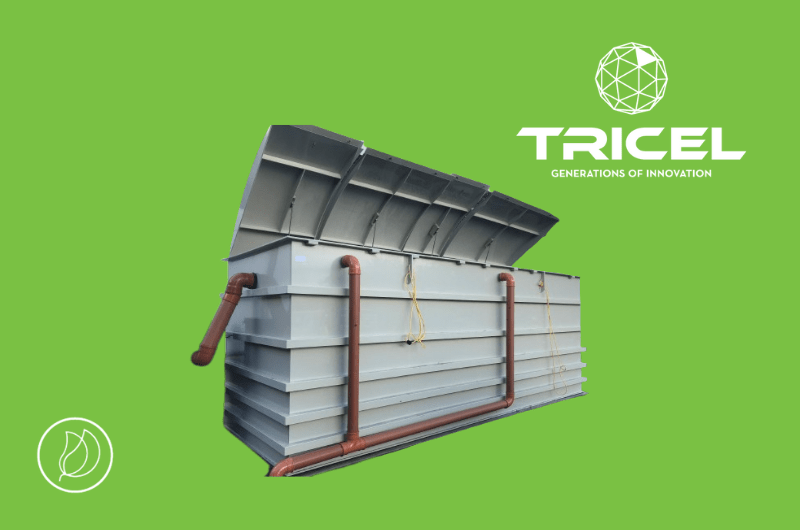
Overall, Tricel’s wastewater treatment plants are designed to be efficient, cost-effective, and environmentally friendly, making them the usual choice for both domestic and commercial applications. The type of treatment needed for your property should consider many factors, such as whether you need a collective system (which is mandatory if available) or an individual system.
For a free site survey to perform diagnostics, contact us today. We do not intend this blog post as a substitute for professional advice, and we recommend speaking with an expert if you have specific questions about your situation.
Articles you might be interested in
Our range of products
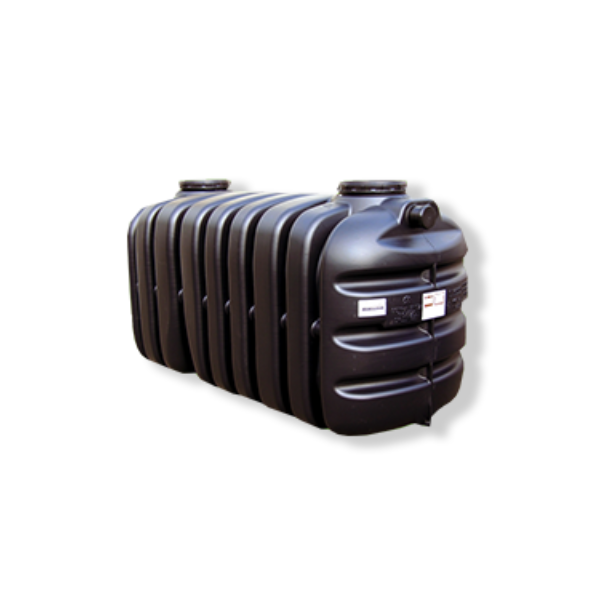
Tricel Vento Septic Tank
Shallow dig tank, strong & robust underground tank, No electrical or moving parts. Ideal for sites with good drainage & plenty of space.
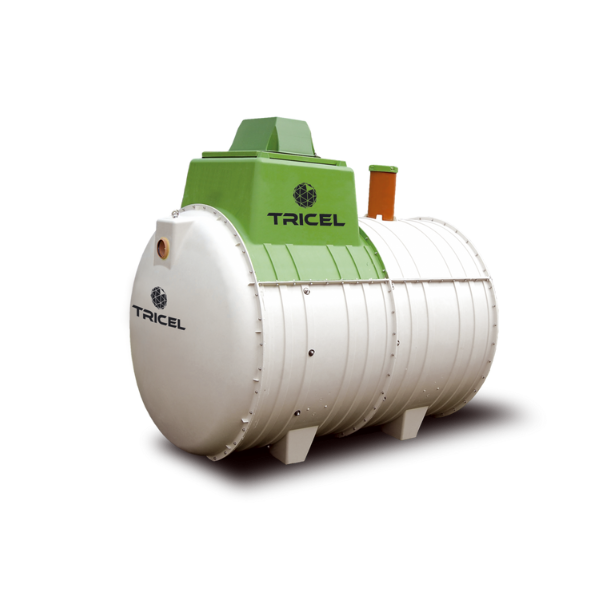
Tricel Novo Sewage Treatment Plant
Durable & long lasting SMC tank, shallow dig tank, easy installation (Plug and Play), long life components.
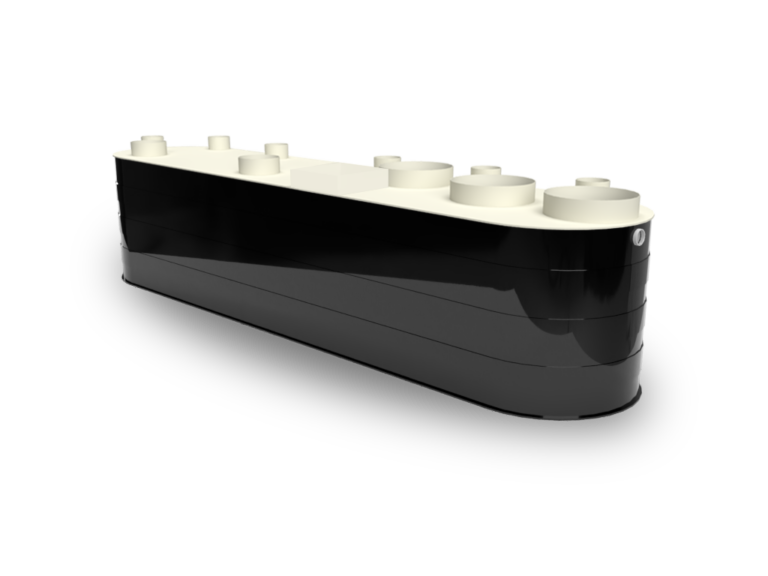
Tricel Maxus Sewage Treatment Plant
Commercial plant. Submerged Aerated Filter (SAF) technology. Ideal for project over 50 PE.
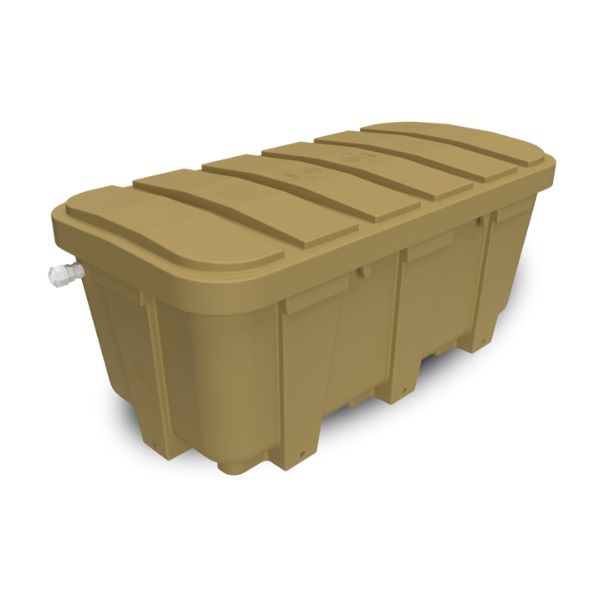
Tricel Tero Tertiary Treatment
An eco-friendly and modular system with proven E.Coli Treatment capabilities in line with the new EPA requirements.
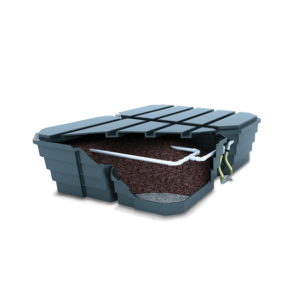
Tricel Puraflo Secondary treatment plant
Ideal for sensitive sites, compliant to Irish Standard, small footprint.
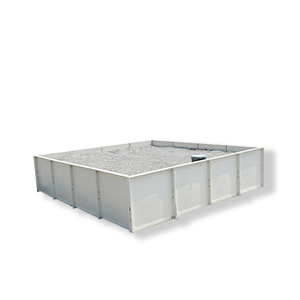
Tricel Sandcel
Sand Polishing Filter
Provides a dual function of polishing the effluent from a wastewater treatment system and disposing it into groundwater.
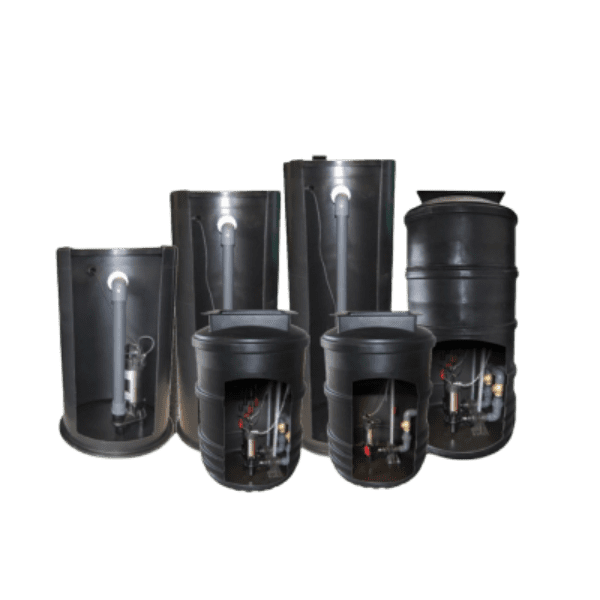
Tricel Pumping Stations
Pump fluids from one place to another where gravity drainage cannot be used, easy and trouble-free installation
50 years in business
A highly successful multinational corporation with over 50 years’ valuable industry experience
SEWAGE TREATMENT PLANTS
Plants available for all capacities, from 1PE up to 50PE. Free advice on request.
Fast Delivery
On-time delivery is a core requirement of our successful business operations
Meet our team
To find a technician in your area, visit our page
TALK SEWAGE TREATMENT
To speak to one of our agents online, click here
ASK FOR A QUOTE
Request a free quote today to have a quote that meets your project!

Recent projects with Tricel Novo IE6 treatment plant
Extensive industry experience, manufacturing since 1973.
Tricel manufacture deliver & install sewage treatment plants across a wide range of industry sectors throughout Ireland & the UK. Tricel also provide import/export services for our international clients. Top quality material offers outstanding capabilities including long life, durability and is a cost-effective solution for sewage treatment even in the harshest environments.
Tricel has installed many of its Tricel Novo Sewage Treatment Plants across the UK.
Frequently Asked Questions
WHAT IS PE ?
PE represents the initials of Population Equivalent. Population equivalent: conversion value which aims at expressing non-domestic applications in terms of domestic loading based on 1 person creates 60 g/day BOD5 and 150l/day. (Code of Practice: Wastewater Treatment and Disposal Systems Serving Single Houses (p.e. < 10), EPA)
DIFFERENT PRODUCTS SOLD BY TRICEL
Tricel Novo & Vitae
Both are wastewater treament plant solutions manufactured by Tricel. Wastewater treatment plants offer a superior quality of treatment. For example, the Tricel Novo comprises of three independent wastewater treatment zones and offers an average of efficiency of 95.9% BOD removal.
This is a higher treatment standard than the effluent from a septic tank. Please note: all wastewater treatment plants used in Ireland must comply with the EN12566-3 standard and all septic tanks must comply with the EN12566-1 standard..
Tricel Vento
The septic tank from Tricel is manufactured as a primary treatment. Designed for the settlement of your effluent. This product may need an additional treatment like the Sandcel or Puraflo.
WARRANTIES
Most Tricel products have a warranty. To discover all the guarantees on our products, as well as on the internal parts, consult our dedicated product pages.
WHAT IS THE QUALITY OF THE WASTEWATER PRODUCED?
The required standards are 20:30:20 BOD, SS, NH4. All Tricel produces exceed the requirements when tested to En12566-3 and comply with SR66.
Learn more about our certification
MAINTENANCE ON THE WASTEWATER TREATMENT SYSTEMS
Tricel recommends that you maintain your device to the fullest. You are obliged by law to avoid all types of pollution or nuisances. Do not hesitate to contact us for more information on our service contracts. An annual maintenance contract may be offered.
Get in touch
Error: Contact form not found.